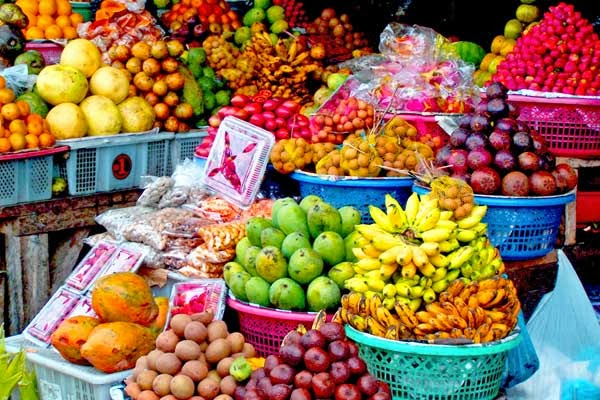
If you're wondering if you can eat fresh fruit in Bali, the answer is absolutely yes!
Bali is a tropical haven for fruit enthusiasts, bursting with a colourful
assortment of fresh produce all year round. Whether you're exploring bustling
markets or grabbing a quick treat from vibrant mobile carts, you'll discover a
rich variety of fruits ready to tantalize your taste buds.
Each fruit from Bali has its peak season, where it reaches its sweetest, juiciest, and
most affordable best. While some fruits make their way to Bali from neighbouring
islands or beyond, the quality remains exceptional, offering a genuine taste of
tropical paradise.
To savour the freshest flavours, go for whole fruits when possible. Pre-cut
options can spoil rapidly in Bali's warm climate and might lose some
nutritional value. If whole fruits aren't available, find vendors who slice
them fresh on-site. And remember, when navigating local markets, don't be shy
about asking for a taste—especially with smaller fruits like bananas.
Where to Buy Fruits in Bali
For the best selection of seasonal and local fruits at reasonable prices,
local markets are your go-to destination. These vibrant hubs offer a direct
connection to Bali's freshest produce.
If you're looking for a broader variety, including fruits imported from
other Indonesian islands or abroad, large supermarkets are a great option. Some
popular choices include Frestive, Pepito, Grand Lucky, Hypermart, Hardy's,
Bintang, and Delta Dewata. These stores often carry a wider selection and may
offer imported options not found at local markets.
Types of Local Bali Fruits
Mango
Local name: Mangga
Season: October - February

Bali
boasts a variety of mangoes, many with green skins that might surprise you with
their incredible flavour. During the peak season from October to February,
mangoes are at their sweetest and juiciest. Outside this period, you’ll find
fewer varieties and potentially higher prices, with fruits that may lack the
same level of juiciness and aroma. Among the highlights of the season are the
"Manalagi" and "Harum Manis" varieties, known for their exceptional taste.
Mangoes
can be used to make excellent jams and facial masks.
How to Peel a Mango:
Method 1: Peel and Slice
Peel the skin off the mango, then either enjoy it whole or cut it into pieces
for easy eating.
Method 2: Cube and Scoop
Cut the mango in half, then score the flesh horizontally and vertically to
create small cubes. Push the skin inward to make the cubes pop out and scoop
them up for a delicious treat.
White Mango
Local name: Wani Mangga
Season: December - March
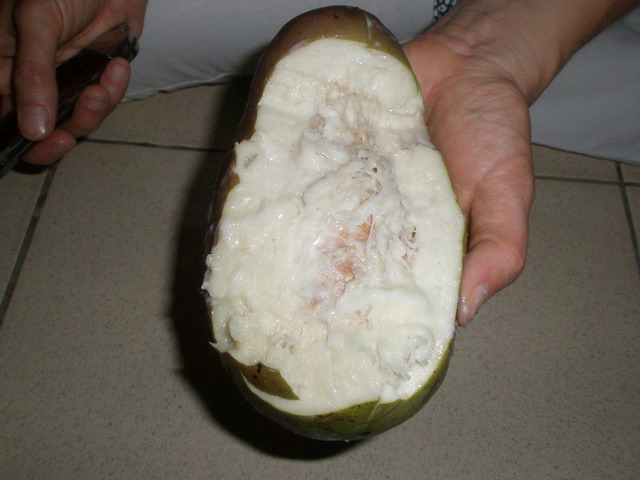
This
distinctive fruit is exclusive to Bali and offers a mildly sweet flavour. When
ripe, it's especially delightful when chilled, with a unique and pleasant
aroma. White mangoes are typically enjoyed without peeling; simply cut them
open and savour the flesh. For the best experience, select mangoes that are
slightly soft to the touch.
Pineapple
Local name: Nanas
Season: Year-round

Yellow
pineapples are juicier and sweeter, whereas green pineapples are more acidic
and better for cooking. To pick a ripe pineapple, give it a sniff—an aromatic,
fruity scent should be detectable even through the skin.
Peeling and Cutting:
- Cut Off Both Ends: Start by cutting off the top and bottom of the pineapple.
- Remove the Skin: Stand the pineapple upright and slice off the skin in vertical strips, moving in a circular motion around the fruit.
- Segment the Pineapple: Cut the pineapple lengthwise into four segments.
- Remove the Core: Take out the tough core from each segment.
- Slice into Pieces: Cut the remaining flesh into bite-sized pieces.
Bananas
Local name: Pisang
Season: Year-round
Varieties: Bali boasts a wide range of bananas, varying in
shape, size, and flavour.
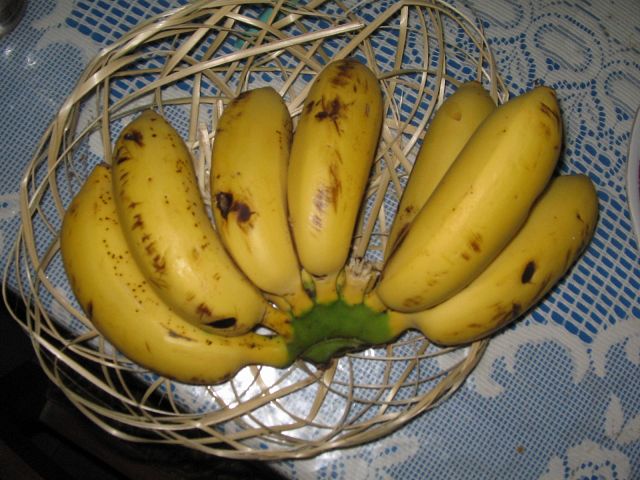
In Bali, high-quality bananas are available year-round. One popular variety
is "Pisang susu" (milk bananas), which are small, plump, and exceptionally sweet.
Green bananas "Pisang Hijau", although firm, are flavourful and can be enjoyed raw or used in cooking.
Hairy Lychee
Local
name: Rambutan
Season: May - October
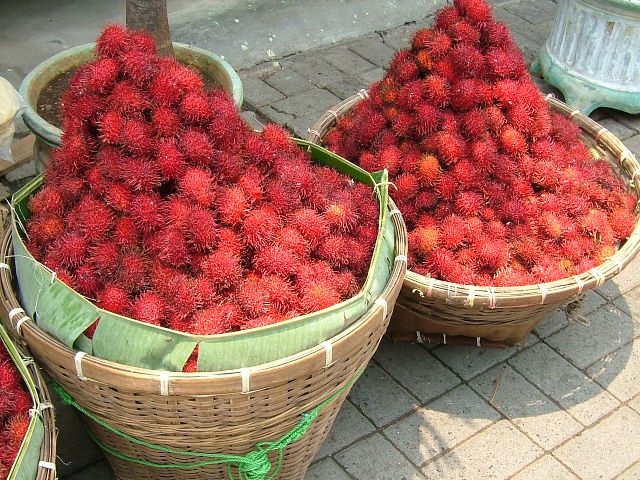
Hairy lychee, better known as rambutan, is renowned for its sweet, juicy
flesh and is very affordable during its peak season. When selecting rambutans,
look for those with bright red skin and soft, hair-like protuberances. The
fruit inside is translucent, juicy, and has a delicate sweetness. Simply peel
off the skin to enjoy but be mindful of the seed inside.
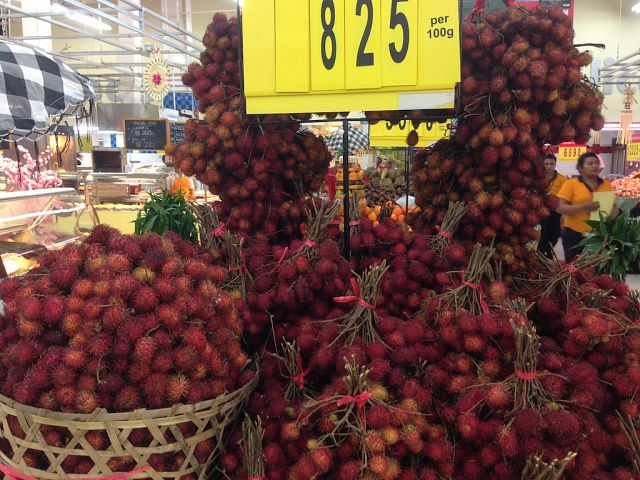
Mangosteen
Local name: Manggis
Season: May - July
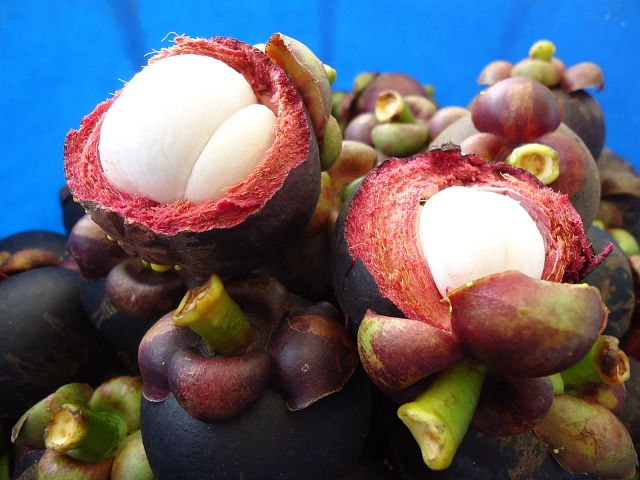
Mangosteen is renowned for its sweet and tangy flavour, featuring a thick
purple rind and juicy white flesh inside. To select a ripe mangosteen, choose
fruits with firm, unblemished skin and a green calyx at the stem. To check if
the mangosteen is ripe, gently press the skin around the calyx. It should
slightly indent or give in under light pressure. If the skin feels firm and
does not yield to your touch, the fruit may be overripe.
To open a mangosteen, either press on the top or make a shallow cut around
the middle with a knife. The fruit is typically divided into segments, like
garlic cloves, which can be easily scooped out with a spoon. Known as the
"queen of fruits," mangosteen is highly prized for its exceptional
taste.
Longan
Local name: Lengkeng
Season: June - September
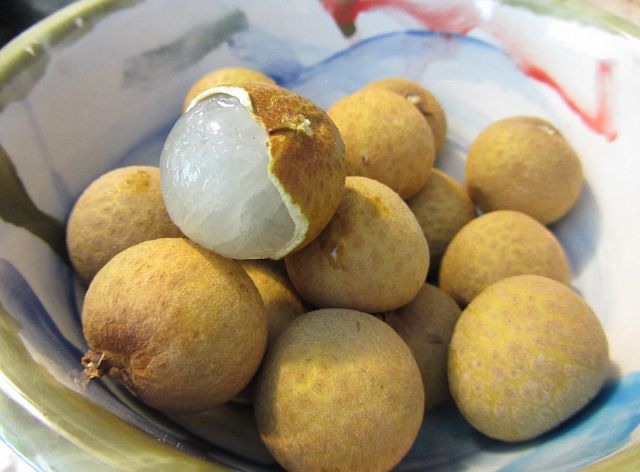
Lengkeng, or longan, are small, round fruits with a
sandy-brown skin. Although they may not look very appealing, the juicy and
subtly sweet flesh inside is quite delightful. To enjoy them, simply peel off
the skin; the flesh easily separates from the seed. However, if stored for too
long, the flesh can dry out and become more difficult to peel. For the best
experience, eat the sweet, translucent flesh after removing the seed.
Papaya
Local name: Pepaya
Season: Year-round
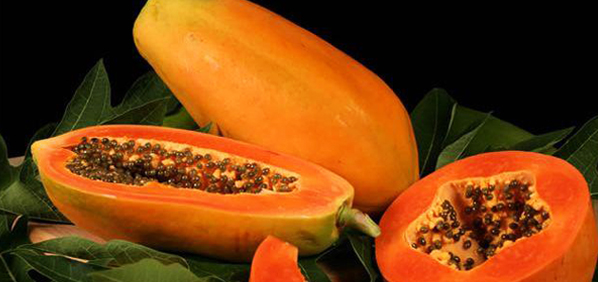
Papaya is a large, elongated fruit with skin that ranges from orange to
slightly green. When ripe, the flesh is orange, soft, and juicy, with a mild,
sweet flavour reminiscent of carrots. It's excellent for digestion and is often
recommended as a morning treat. In Bali, papaya is available year-round, but
its quality varies. During the peak season, it’s ripe and affordable, while out
of season, it can be green and less flavourful.
Soursop
Local name: Sirsak
Season: June - September
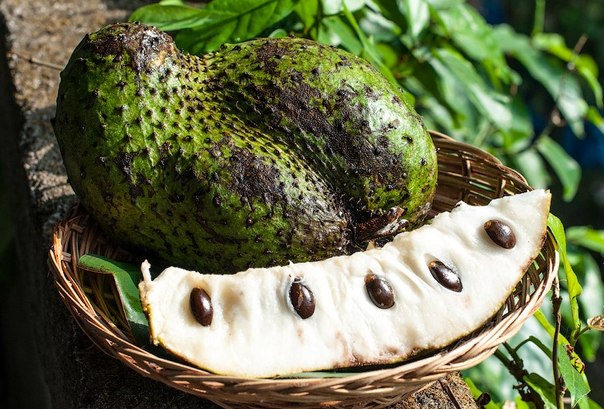
Also known as custard apple, soursop is a versatile fruit often used in ice
cream, desserts, salads, and shakes, or enjoyed fresh. The fruit is harvested
green, as it tends to split open and fall when fully ripe. Once picked, it
ripens and softens in a warm place. The flesh can be scooped out with a spoon
or cut into cubes and eaten with a fork, much like papaya.
Rich in vitamins and
minerals, soursop supports gut health, liver function, and stomach acidity
regulation. It is also thought to help reduce excess uric acid, which can be
beneficial for people with arthritis or rheumatism, and there are claims it may
aid in cancer treatment.
Dried soursop is also sold in shops around Bali.
Starfruit
Local name: Belimbing

Starfruit, also known as carambola, is notable for its distinctive star
shape and pleasant aroma. While its taste may not be extraordinary, it offers a
sour-sweet flavour and a juicy texture. Often used as a garnish for dishes,
starfruit is visually striking but might not be a fruit you crave frequently.
Jackfruit
Local name: Nangka
Season: April - September
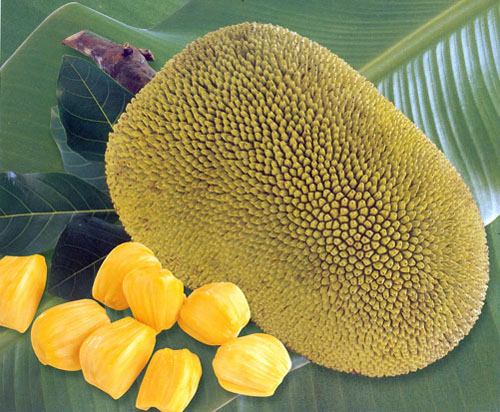
Jackfruit, sometimes referred to as breadfruit, can grow up to 40 cm in
diameter and resembles durian but is less spiky. Its firm, fragrant, and
slightly sticky flesh has a bubble gum-like flavour. Typically, only the bright
yellow flesh of the jackfruit is sold by weight.
Though jackfruit is quite
filling, its sticky interior can make preparation tricky. Use gloves and oil to
handle and clean off the residue.
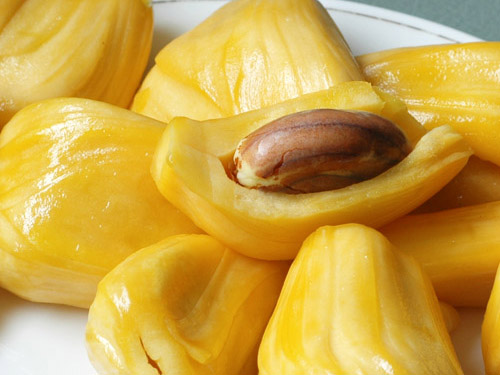
Durian
Local name: Durian
Season: December - March
Varieties: Bali offers a range of durian varieties, with
"Bangkok" being particularly popular and delicious.
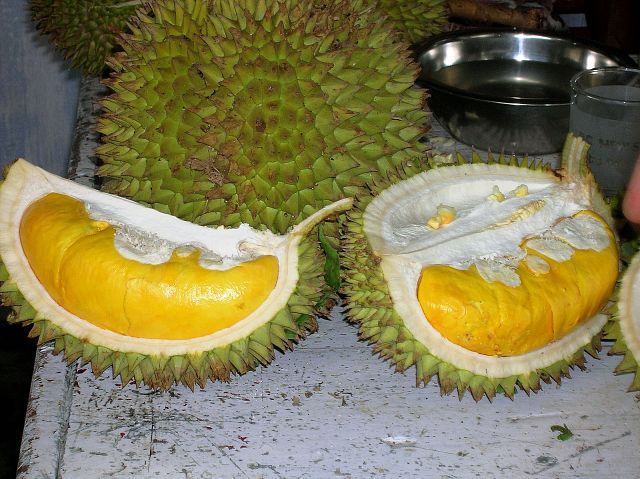
Durian is often described as "smelling like hell but tasting like
heaven." While its potent odour is infamous, its rich, creamy taste has
many fans. The fruit is spiky and resembles jackfruit but is smaller. Inside,
it contains sausage-like segments that are creamy and indulgent.
People usually
either love or detest durian because of its strong flavour and lingering
aftertaste. Its smell is so persistent that it’s banned in many hotels. Locals savour
durian from street vendors along the roadsides.
The fruit is oily and high in
fat, which can raise body temperature, so it's a good idea to eat a couple of
rambutans afterward to help cool down.
Avoid combining durian with alcohol, as
this is considered potentially dangerous.
Pomelo
Local name: Jeruk Bali
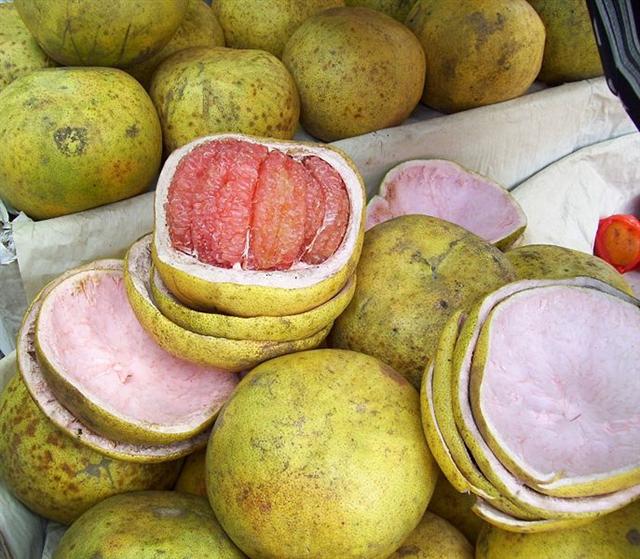
Pomelo is a large citrus
fruit resembling a grapefruit but with a sweeter, less bitter taste. Its
flesh is tender, juicy, and aromatic, packed with vitamins A and C.
When
selecting a pomelo, look for one with a firm, slightly shiny skin.
To
enjoy, peel away the thick, spongy rind to reveal the juicy segments
inside. Pomelo makes a refreshing addition to salads or can be enjoyed on
its own.
Dragon Fruit
Local name: Buah Naga
Season: May - October
Varieties: Bali Dragon fruit comes in two main
varieties: white-fleshed and purple-fleshed. Purple dragon fruit is
typically sweeter and more aromatic, while white-fleshed varieties are
less fragrant but visually striking.
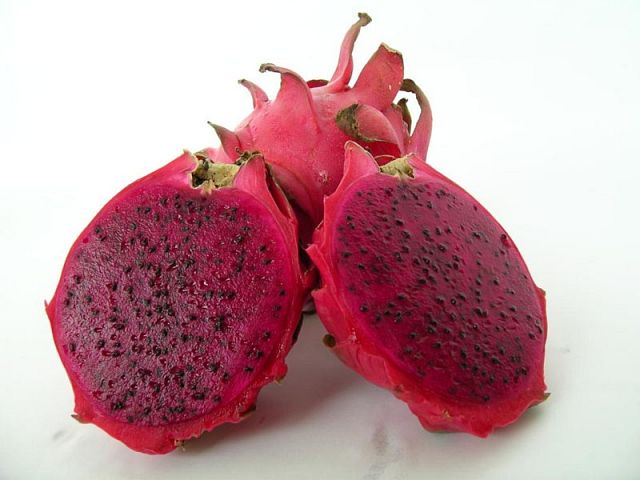
Dragon fruit is bright pink
and visually stunning, with its vibrant scales hinting at its colourful
interior. The purple-fleshed variety offers a kiwi-like flavour, while the
white-fleshed version is less aromatic but still appealing.
Dragon fruit
is often used in fruit juices and smoothies for its vibrant colour and unique
taste.
To enjoy, cut the fruit in half and scoop out the flesh with a
spoon, or peel and slice it as desired.
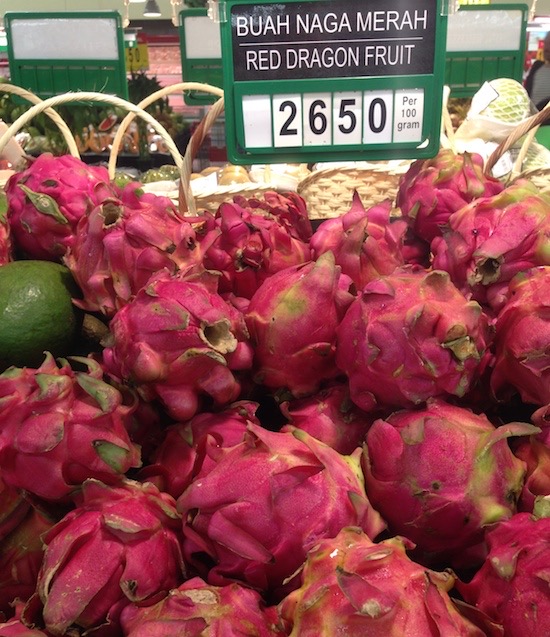
Watermelon
Local name: Semangka
Season:
Year-round
Varieties: Watermelons come in red and yellow
varieties. Yellow watermelons are typically sweeter but also more
expensive than their red counterparts.
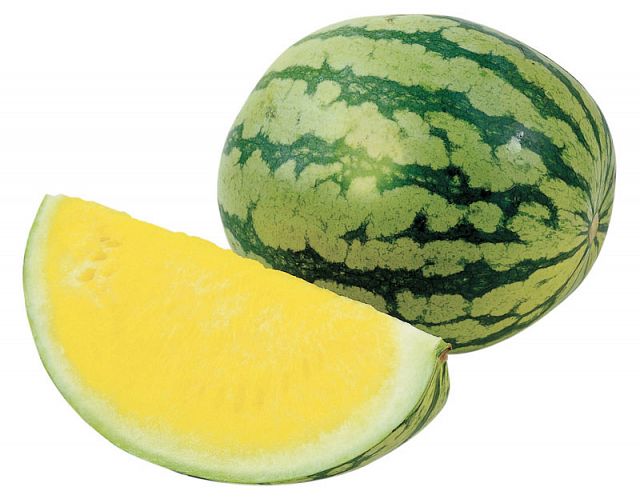
Watermelons are affordable
and widely available almost year-round in Bali.
Most watermelons in Bali are seedless, making them
convenient for snacking.
Enjoy them chilled for a refreshing treat on a
hot day.
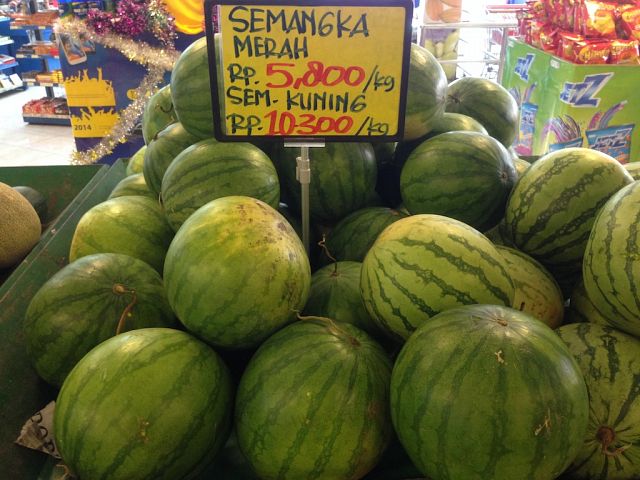
Coconut
Local name: Kelapa
Season: Year-round
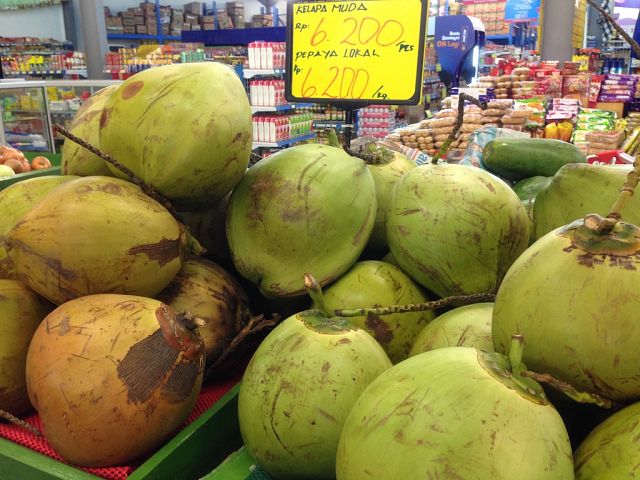
· Green Coconuts: Coconut
water from unripe green coconuts is a highly nutritious drink, particularly
refreshing in hot climates. It is rich in electrolytes and can help keep you
hydrated. The flesh of green coconuts is also known for its benefits to male
sexual health.
· Ripe Coconuts: Ripe coconuts
are used primarily for their flesh, which can be shaved for culinary purposes.
The juice from ripe coconuts tends to be more acidic and less sweet compared to
the water from green coconuts.
Lychee
Local name: Leci
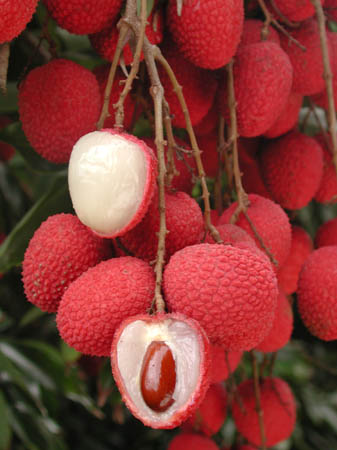
Lychee is known for its aromatic and flavorful qualities, featuring translucent white flesh and a hard pit.
Often featured in desserts and beverages,
lychee can be relatively pricey but offers a delightful taste and unique
texture.
Snakefruit
Local name: Salak
Season: Year-round
Varieties: "Salak gula" are notably sweet, while "Salak Bali" has a more tangy taste
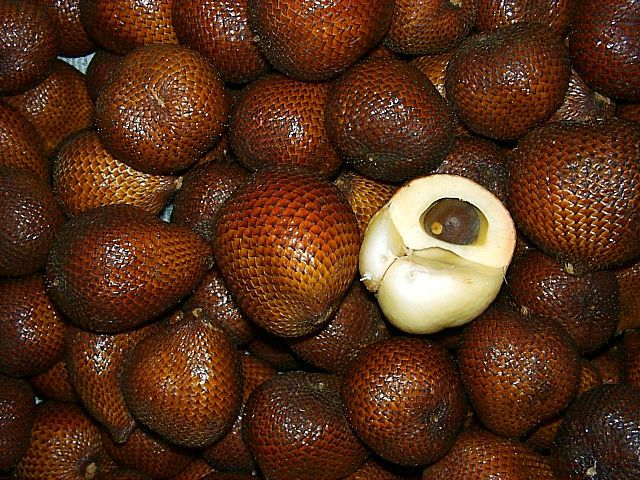
Bali Snake fruit, with its distinctive, scaly skin
resembling snake scales, offers a unique taste experience. The fruit’s flavour
ranges from sweet to slightly sour, often reminiscent of strawberries or
carrots.
Harvesting can be tricky due to the thorny tree.
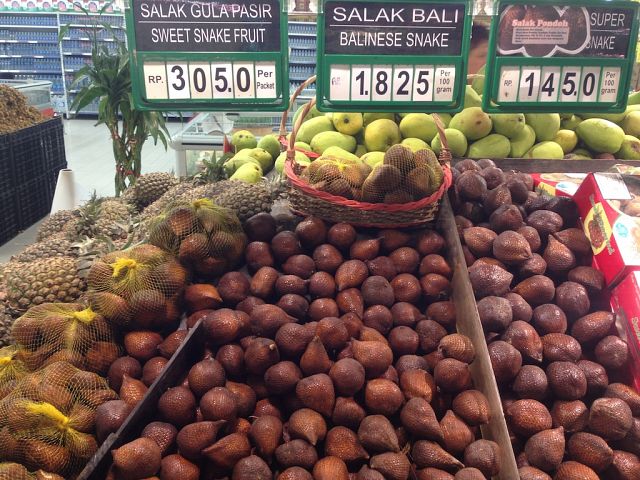
Guava
Local name: Jambu biji
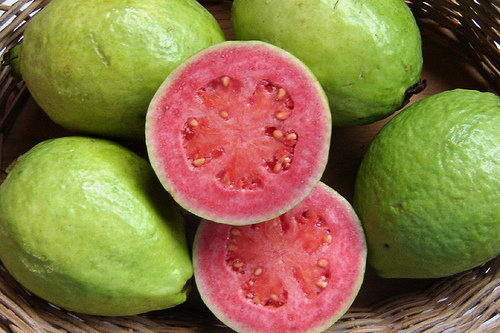
Guavas, with their green apple-like
appearance, are best enjoyed when slightly soft to the touch. Inside, they
contain numerous small, hard seeds.
Ripe guavas are known for their sweet
and aromatic flavour, which combines hints of pineapple and strawberry.
Guava
juice is a popular and refreshing option, showcasing the fruit’s unique
taste.
Passion Fruit
Local name: Markisa
Season: January - April
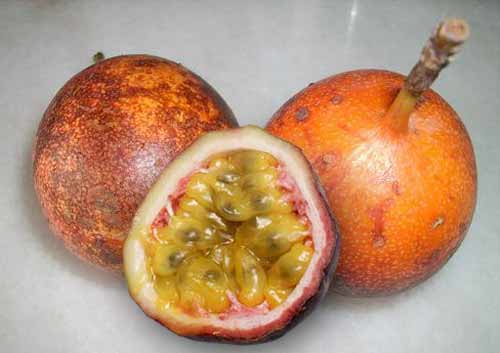
Passion
fruit is a round fruit with a hard yellow skin that softens as it ripens. When
ripe, it develops a sweet flavour, and the edible seeds inside provide a
pleasant crunch.
Although relatively expensive, passion fruit is prized for its unique taste and texture.
Lime
Local name: Jeruk Nipis
Season: Year-round
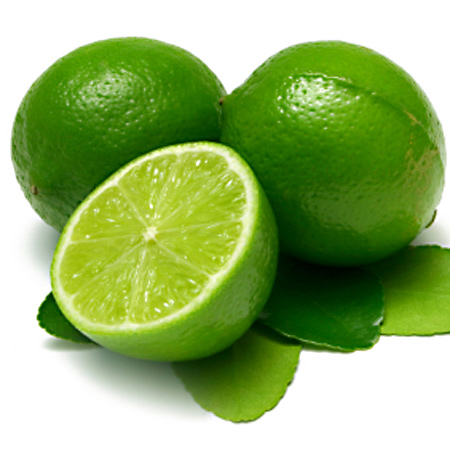
Limes are small, round fruits with
green skin and a slightly bitter taste. They are often used in various
dishes and sauces as an Asian alternative to lemons, adding a zesty flavour
to a wide range of recipes.
Avocado
Local name: Alpukat
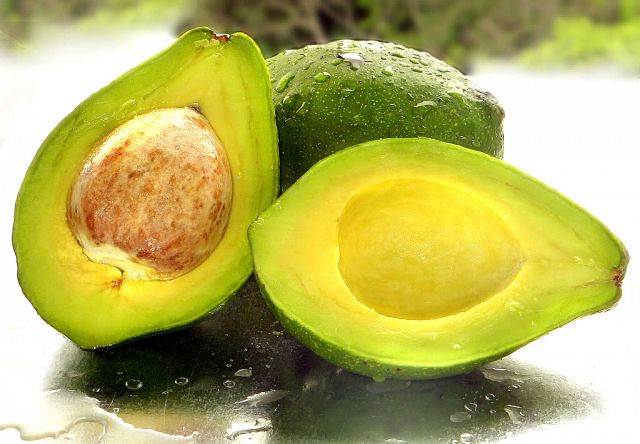
Ripe avocados are pear-shaped with a
soft, green skin and light green, creamy flesh.
Known for their rich,
easily digestible fats and nutrients, they offer a buttery texture and
mild flavour.
Outside of season, avocados can be costly.

Tamarillo
Local name: Terong Belanda (lit. Dutch
Eggplant)
Season: May - September
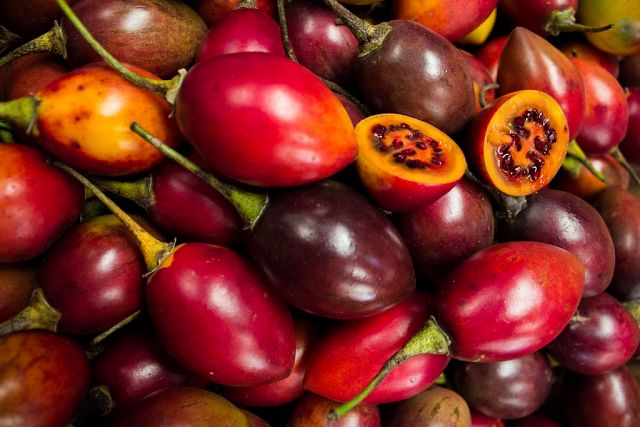
Tamarillo is a sweet and sour fruit with a
distinctive dark red colour. It has a unique flavour and is easy to eat by
simply cutting it open and scooping out the flesh with a spoon. The skin is
usually not eaten.
Local Strawberries and Grapes
In Bali, you can find local strawberries and grapes, but they often fall
short of the quality found elsewhere.
Bali Fruit Seasons at a Glance
- Passion Fruit: January - April
- Jackfruit: April - September
- Tamarillo: May - September
- Mangosteen: May - July
- Dragon Fruit: May - October
- Rambutan: May - October
- Longan: June - September
- Soursop: June - September
- Mango: October - February
- White Mango: December - March
- Durian: December – March
- Passion Fruit: January - April
- Pineapple Papaya, Lime, Watermelon, Bananas, Snake Fruit: Available year-round!
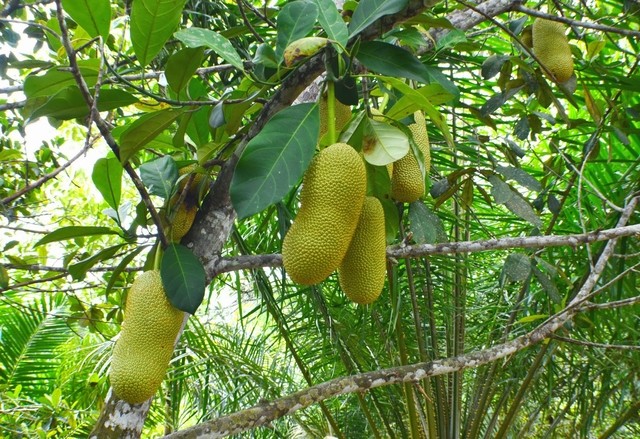



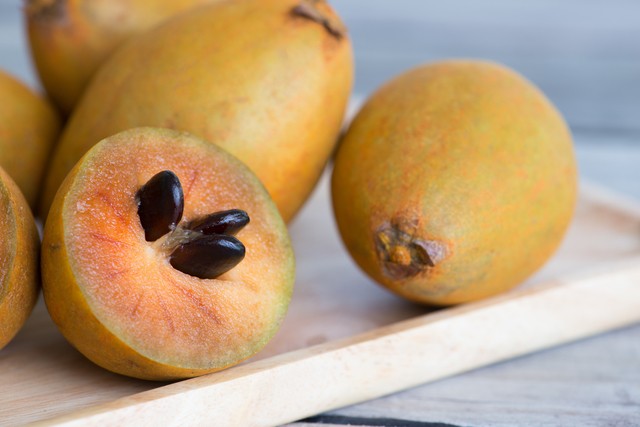
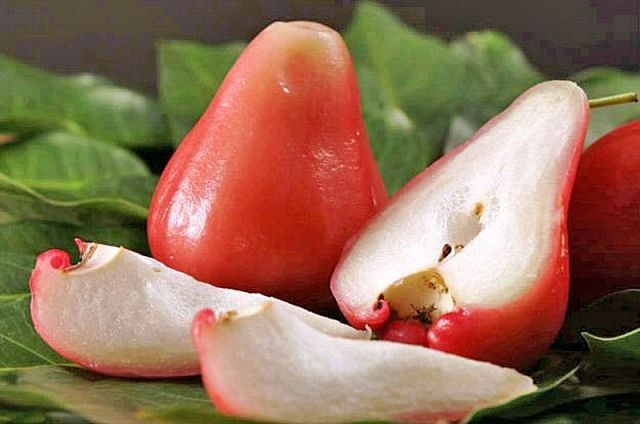

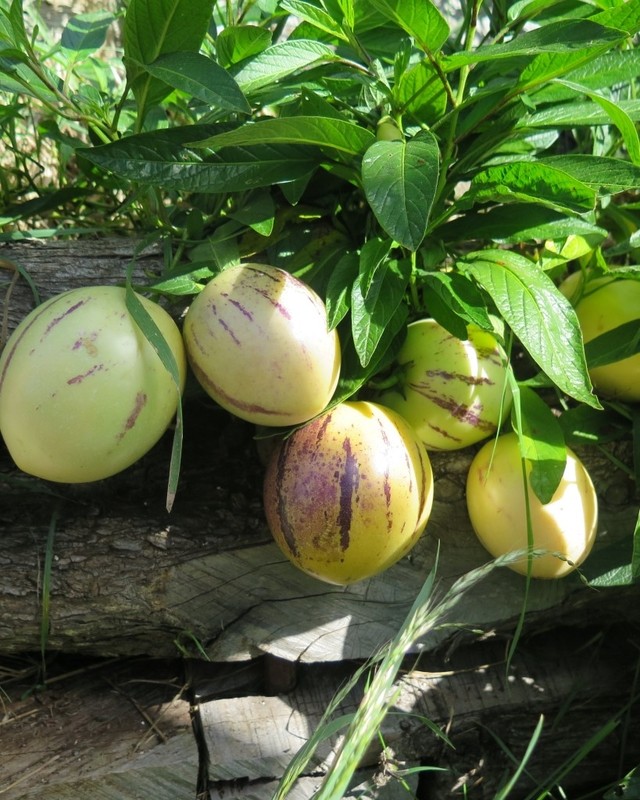
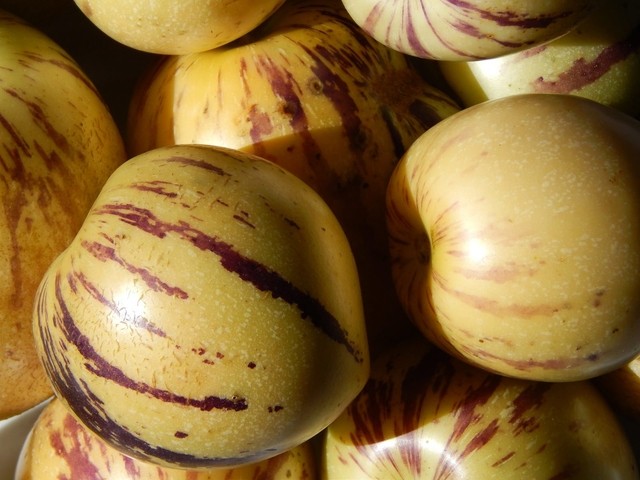
thank you for your ideas, we note them all :)